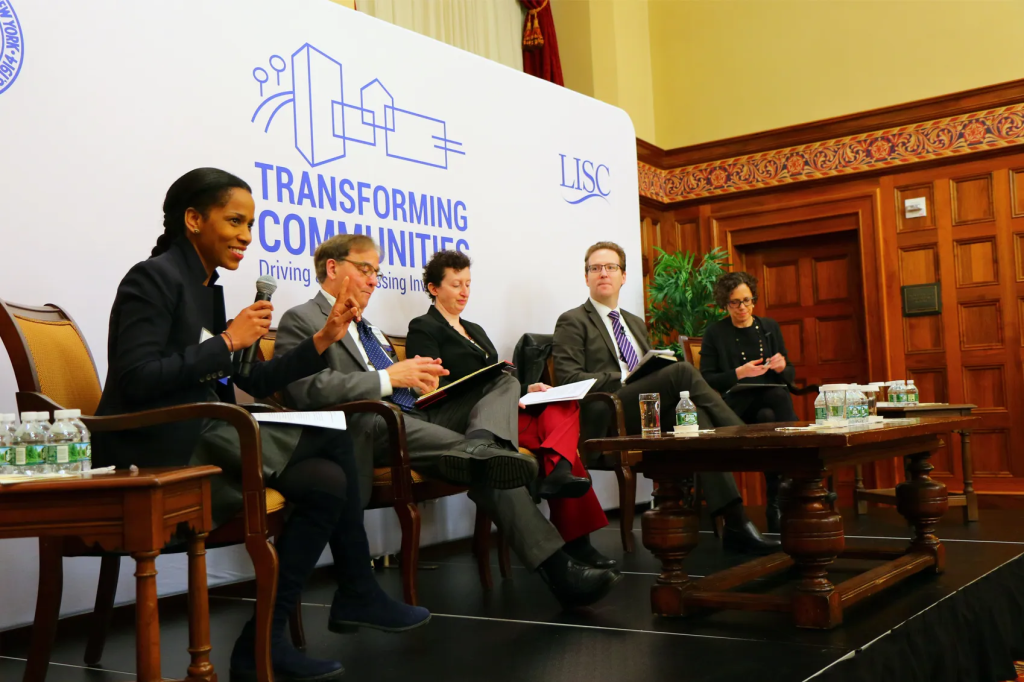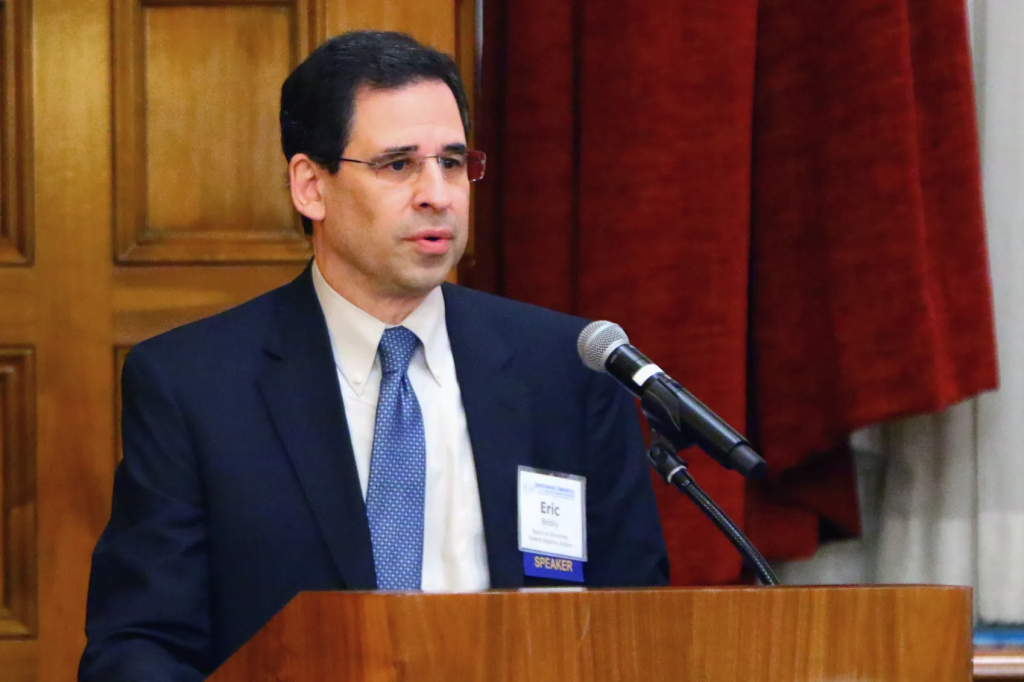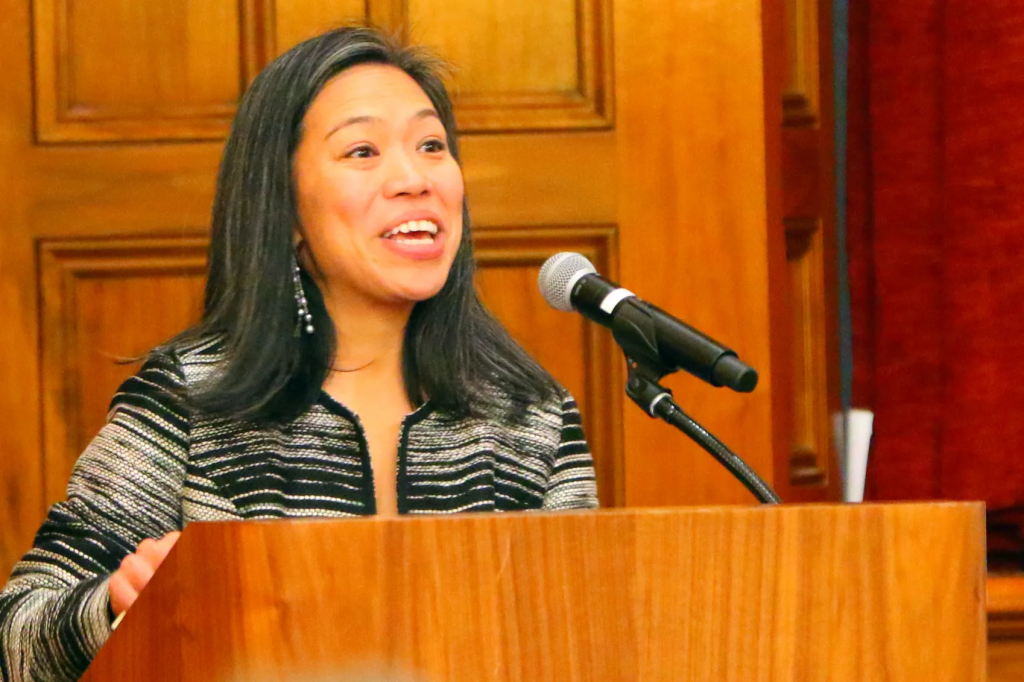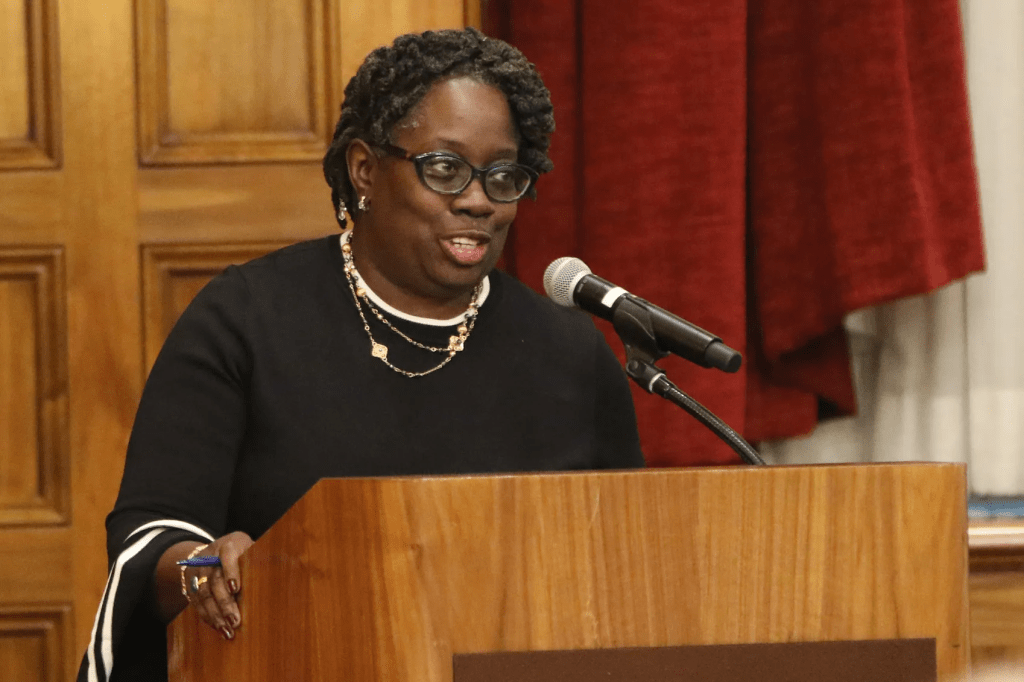
At our December summit on community development finance, Transforming Communities: Driving and Assessing Investment, it became clear that organizations financing community development are at a crossroads.
Their mission of funding and building capacity in the service of connecting all Americans with opportunity has never been more urgent. At the same time, however, traditional public and private sources of capital typically used to achieve these goals are shifting and shrinking. Armed with data that prove the effectiveness of its models, the industry is looking for new, flexible capital tools that can power and scale the work going forward.

Insufficient capitalization is what “holds community development back,” said Eric Belsky, director of consumer and community affairs for the Federal Reserve Board of Governors, at the conference. But, building creative partnerships can and must leverage funding from public and private sources, including the capital markets, he added. “[There’s a] new sophistication of the industry in seeking to tap a broader array of funding mechanisms.”
Local Initiatives Support Corporation (LISC) and the Federal Reserve Bank of New York co-sponsored the Transforming Communities event, which brought together hundreds of leaders from community development, the financial sector and others who work in impact investing for a day of conversations, including three expert panels. Presenters took a hard look at how community development is currently funded, how the field can gauge the impact of its investments, and what financing strategies and instruments can be harnessed in the future to attract more capital to promising opportunities.
This last issue was, in many ways, the event’s most critical topic, as stakeholders grapple with the growing demand for economic opportunity among Americans living in underinvested communities.
The Challenges for Community Development

Many speakers described how increasing income inequality and an affordable housing crisis in both rural and urban places are posing challenges to Americans’ wellbeing and a competitive economy. The keynote speaker, Maria Torres-Springer, New York City Department of Housing and Preservation and Development Commissioner, reminded the audience that there is no state in the country where an adult supporting a family of four and earning minimum wage can afford a two-bedroom apartment.
Colvin Grannum, President and CEO of Bedford Stuyvesant Restoration Corporation, listed wage stagnation, limited access to pensions, and sky-high housing costs among the obstacles preventing low- and moderate-income families from realizing their aspirations. “I worry about a majority of our citizens not owning any assets at all,” he said.
New Horizons for Capitalization
In spite of this national landscape, many of the conference panelists agreed that there exists potential for new kinds of capitalization and investment, and a growing trend toward social impact investing.
“What [CDFIs] have to offer is so important in this moment,” said Fran Seegull, executive director of the U.S. Impact Investing Alliance. “People are interested in investing in accordance with their values.’’
Seegull pointed to the looming transfer of wealth from baby boomers to their millennial heirs as a major opportunity. It will put an estimated $40 trillion over the next few decades in the hands of a generation much more likely to be socially motivated in their investment strategies.
Catherine Godschalk, Vice President of Investments with Calvert Impact Capital, also described an awakening among institutional investors to the fact that challenges like income and health inequality, and climate change serve as material threats to their bottom lines.
Godschalk noted the CDFI industry’s heavy reliance on government funding and CRA investment from financial institutions, a vulnerability for the industry amidst the current policy environment, posing threats to government-funded programs and New Markets and Low-Income Housing Tax Credits. Godschalk and others also said they remain optimistic about recent CDFI efforts to tap capital markets to diversify their financing streams, noting LISC’s $100 million bond offering earlier this year. “I feel encouraged by the potential to really figure out what the next tools will be and how to creatively leverage private capital,” Godschalk said.
New Metrics for New Perspectives

As CDFIs and similar organizations look to diversify their income streams, they can also leverage mounting data that prove the successes of community development. As Denise Scott, LISC’s Executive Vice President for National Programs, said in her opening remarks, more than at any other point in the industry’s history, “we have reliable data that show us what works and what doesn’t work.”
One of the biggest challenges facing CDFIs is how to more closely tie their underwriting to quality of life outcomes rather than outputs, noted Antony Bugg-Levine, CEO of the Nonprofit Finance Fund. Even mission-driven lenders tend to judge success or failure based on financial performance and activity on the ground, like the number of jobs, housing units, or school seats financed, he said.
Bugg-Levine and other panelists urged a shift toward quality of life metrics, such as life expectancy, child wellness and high school graduation rates. In fact, Amy Gilman, senior program officer with the Robert Wood Johnson Foundation, said longer life expectancy should be considered the ultimate community development outcome, even if it is difficult to measure. “Where we live is perhaps the most important indicator of health and life chances,” she said, pointing to the reality that people in many low-income communities will die more than a decade sooner than those in wealthier, nearby areas.
Joseph Carbone, CEO of WorkPlace, a national employment organization, proposed using a “middle class metric” whereby what is measured is the ability to help create “lifelong learning in communities, where people stay connected to careers for as long as they are working.” That, he also said, would “meet the demands of this economy.”
Using Knowledge to Create Local Opportunity
Ideally, these kinds of metrics will help shape how community development capital is deployed to make investment dollars more meaningful. Jim King, CEO and president of Fahe, a nonprofit network focused on eliminating poverty in Appalachia, cautioned against capital providers that come and go, without any real sense of their impact — a particular problem in small towns with limited access to community development investors; he reminded the audience about the importance of local expertise.
“Local leaders make things happen,” King said. “But they need to be backed up by capital and expertise. It’s not about hand outs and grants; it’s about consistent smart capital that gets in their hands and they can use. We need wealth that sticks — expertise, capacity and the ability to replicate.”
Getting Our Story Out
All the speakers urged participants to explain the value of their work more compellingly and clearly to key constituencies, both to protect government programs vital to their work and to reach new investors.
“Tell your stories to the financial markets,” urged Navjeet Bal, vice president and general counsel for Social Finance, a nonprofit focused on Pay-for-Success and other social investment efforts. “There is a lot of interest in thinking about double bottom lines and triple bottom lines. We have to start having those game-changing conversations.”
If any industry can make it happen, it is the community development industry, said keynote speaker Torres-Springer, urging the audience to simplify its message in order to communicate “what’s at stake” to a broader, more inclusive audience. “We have to build a bigger tent,” Torres-Springer emphasized, as she underscored the need for a new type of coalition-building aimed at expanding the community’s network of supporters.
“We’ve always adapted and innovated,” she said. “And now, we need to seize contemporary opportunities.”
For more information regarding the Transforming Communities conference, please see our earlier Teller Window post or visit the event page for materials and a full webcast recording.
This article was originally published by the New York Fed on Medium.
The views expressed in this article are those of the contributing authors and do not necessarily reflect the position of the New York Fed or the Federal Reserve System.










